How to brush your teeth
Why it’s important
Brushing your teeth twice a day helps to keep your teeth and gums healthy. If you do not brush your teeth properly, plaque which is a film of bacteria coats your teeth. Plaque contributes to gum disease and tooth decay.
How to help your child brush their teeth properly
You should:
- ask children to brush their teeth twice a day for 2 minutes. You can use a 2 minute timer or download the Brush DJ app.
- use a mirror so they can see where they need to brush
- use hand over hand guidance so your child can feel the movements
- try an electric toothbrush which can motivate older children.
- use a reward chart for motivation.
Get age-specific toothbrushing tips for your child.
How to clean your teeth – a step by step guide
Step 1
Squeeze a pea sized amount of toothpaste onto toothbrush.
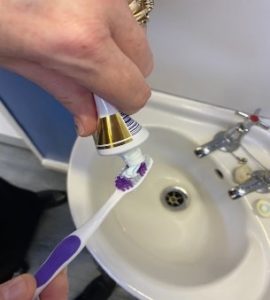
Step 2
Wet the toothbrush.
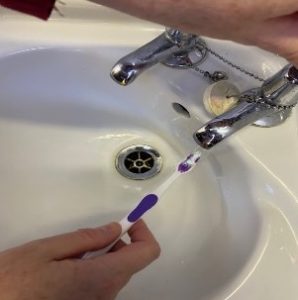
Step 3
Gently brush all the surfaces of the teeth, gums and tongue in a circular motion.
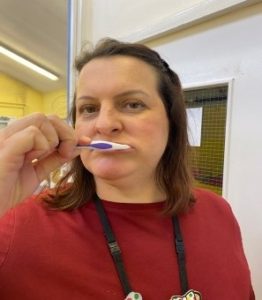
Step 4
Spit into the sink.
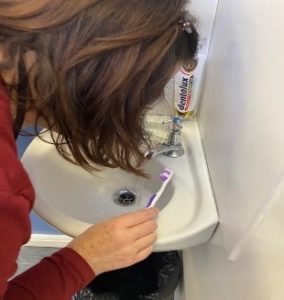
Step 5
Wash your toothbrush.
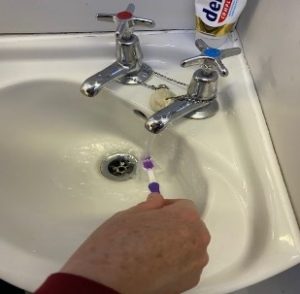
Tips to help your child if they struggle with fine motor skills
If your child struggles with using the small muscles in their hand (fine motor skills), you could try using:
- toothpaste in a pump rather than a tube
- a floss pick rather than dental floss string. You can wash the floss pick as you progress in the mouth and continue to practise using dental floss.
- a mirror so your child can see their teeth whilst brushing.
Tips to help your child if they struggle with gross motor (physical) skills
If your child struggles with using their large muscles for whole body movement (gross motor skills), you could try:
- a stool to help them reach the sink
- getting them to sit down to brush and spit into a bucket or bath
- asking the child to brush their teeth whilst sitting in the bath.
What you can do if your child has sensory issues
Your child may process sensory information differently and may need adjustments for the toothbrushing process. These include:
Touch or proprioception issues
You may need to try a softer toothbrush a non-foaming toothpaste.
Smell
You may need to change the toothpaste and ask the child to rinse more frequently.
Vestibular
Your child may have poor body awareness or balance issues. You may need to stand behind your child and ask them to use a mirror.
Auditory
Your child may find the sound of the toothbrush distracting. You could try singing, noise cancelling headphones or a toothbrush that sings.
Oral/taste
Try a mild or non-flavoured toothpaste.
